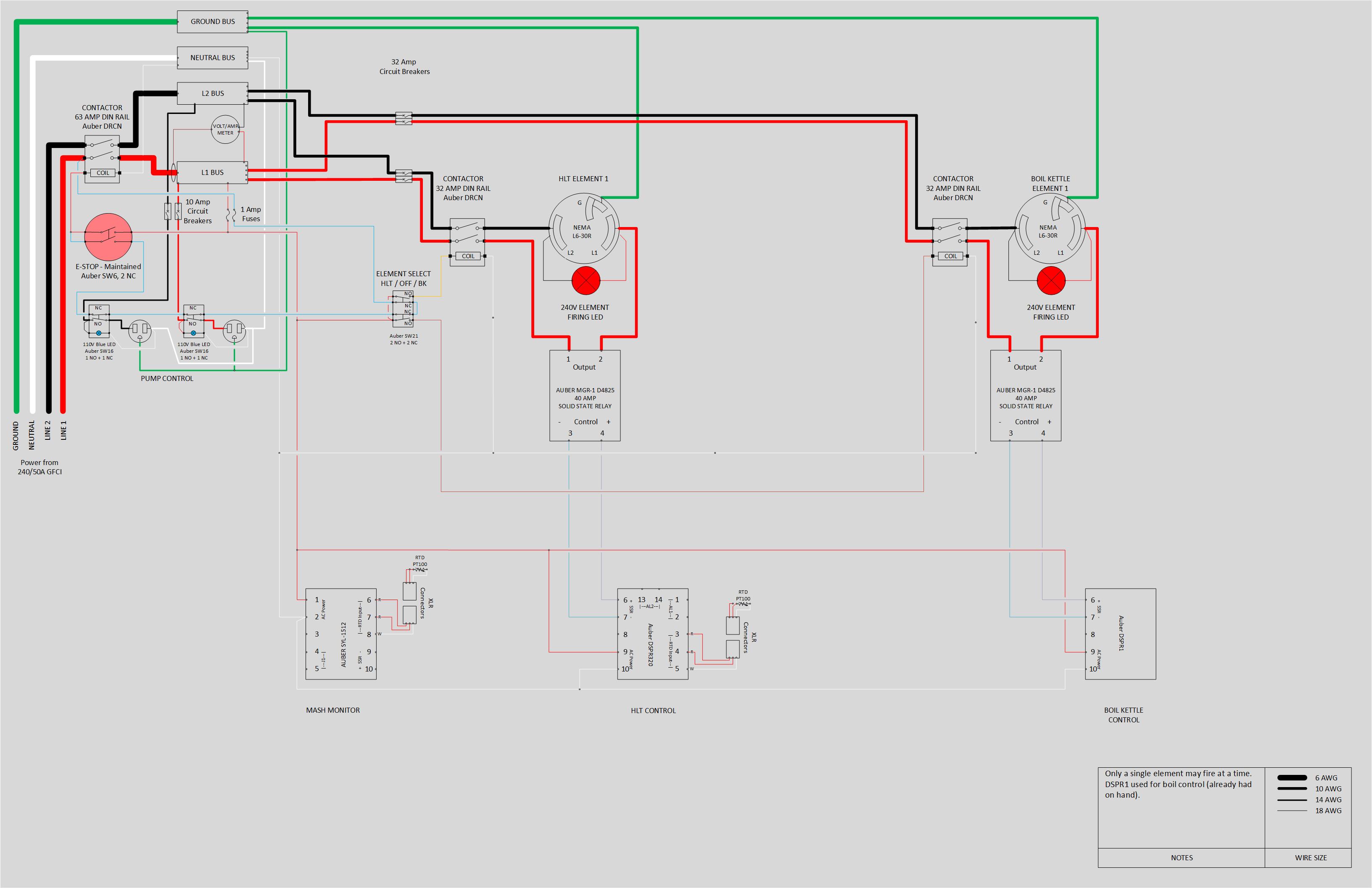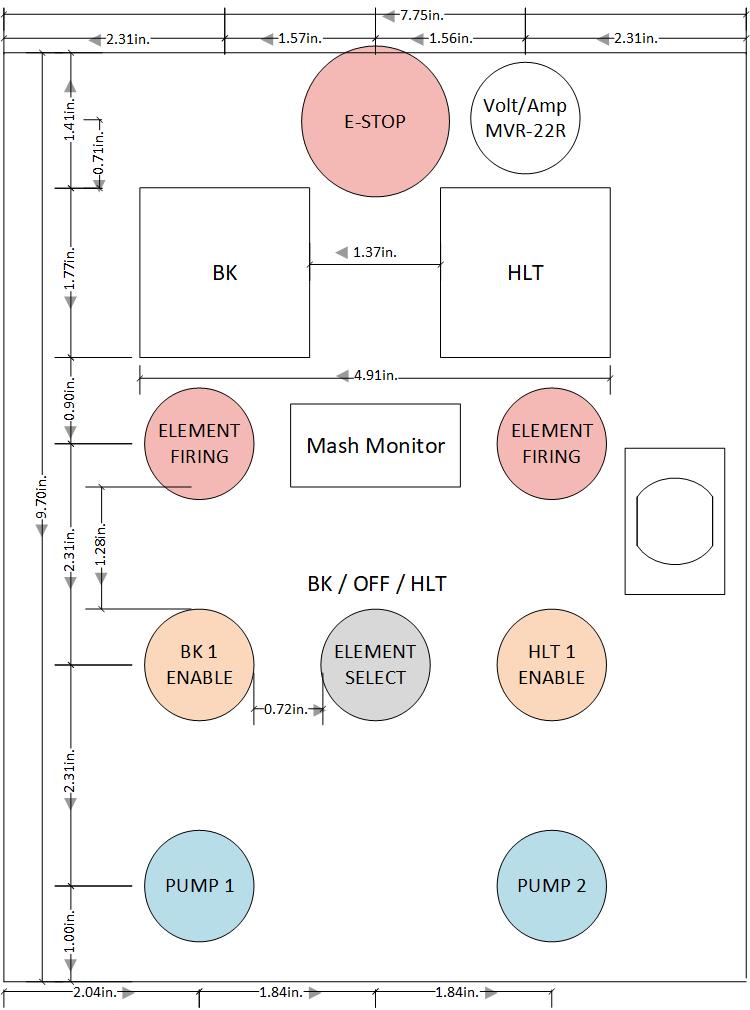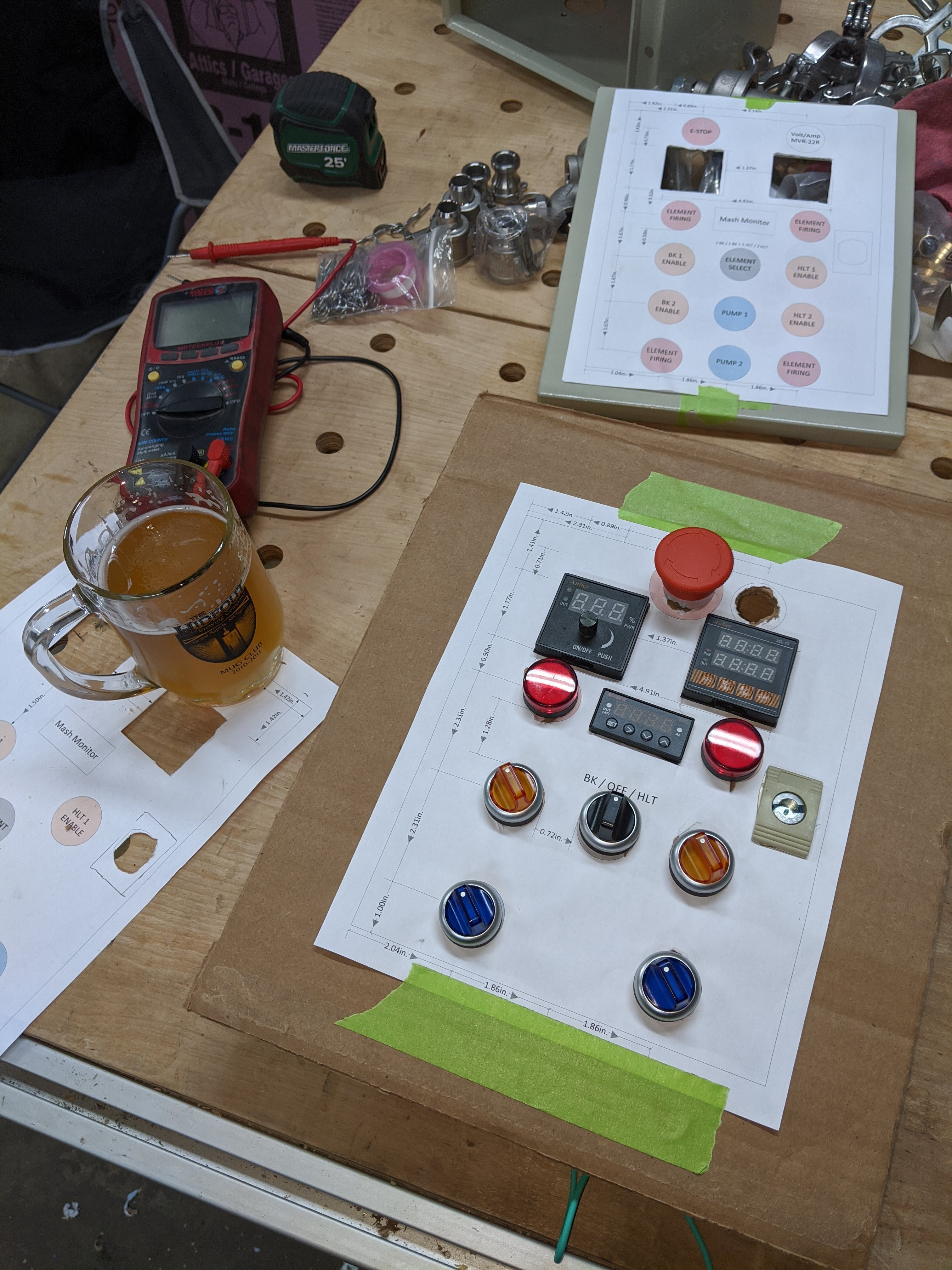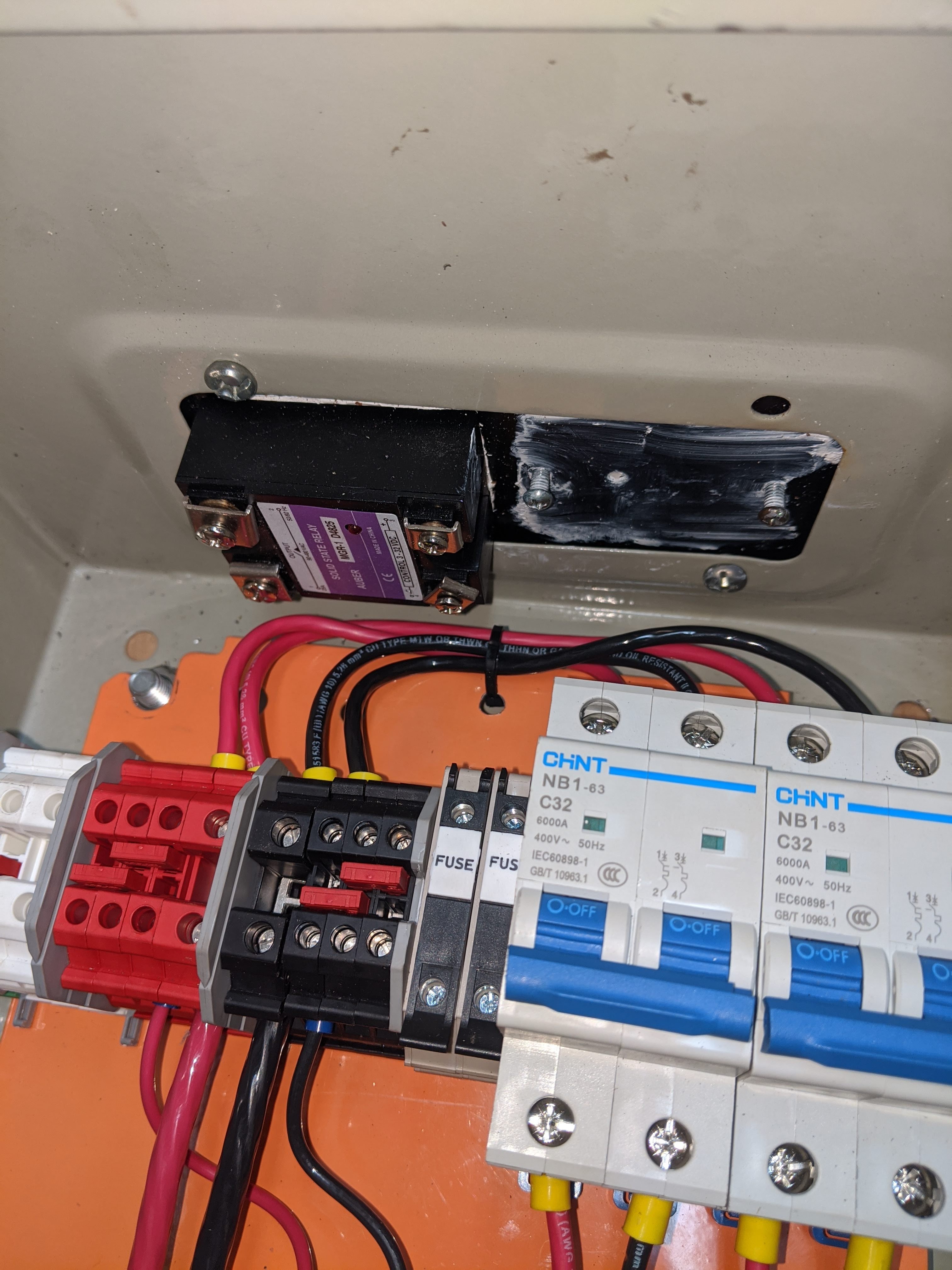SalParadise
Active Member
Hi All!
Long time lurker, first time poster here. First off – the proposed diagram is largely based on the work I’ve found on this forum from user @doug293cz. After spending so much time over the past year pouring over various diagrams, I’ve become irrevocably partial to his – which is why this diagram matches the look and layout of the work he’s done. I feel the need to point this out up front, as I’m not trying to pass these off as diagrams that a well-known forum member has provided – If they look like Doug’s it’s because I shamelessly copied his work and made some minor adjustments to suit my needs. If anyone is bothered by this, please let me know and I’ll adjust the diagram as needed. HUGE thanks to Doug for all the attention he’s given this forum.
A few years back I teamed up with a couple of friends and built out a setup with 30 gallon kettles, which was great for a while - we were all too busy to brew more than once every other month and splitting the batches three ways worked out nicely. However, I quickly realized that we don't always agree on what to brew and the more I brewed, the more often I wanted to brew. So, while we still brew as a group every so often, I found myself brewing 5 gallon batches again. I decided last year I'd like to retire my burners and go full electric. Since then I've spent a fair amount of time reading up on the topic, both here and over at Kal's site and thinking through how'd I'd like the final panel to function. Since outfitting kettles for electric brewing is far cheaper than building a control panel for each system, I thought it might be clever to save some money and design something that would work great on both my small system and the group's larger system.
Over the past week, I spent some time finally putting together a diagram. My plan here isn’t to build this panel all at once, but rather step into things as my budget allows. I’m attempting to begin with the end in mind to avoid having to replace components, wiring, etc. down the road with units rated for the higher amperage. Initially this panel will likely start as an eHERMS system (since I recently scored a deal on Craigslist that was too good to pass up) and grow into something along the lines of this proposed design.
When brewing on the small system, I’ll have 30 amps to play with, so plan on running a single element at a time. On the bigger system, we have 50+ amps available, so I was planning on setting it up for back to back batches. We currently don’t brew back to back batches, but my thought was it might be nice to be able to do so, or to be able to fire a pair of elements in one kettle at the same time to reduce the ramp time for heating 20+ gallons of water.
The eHERMS setup I bought is a 10 gallon Boilermaker with the BoilCoil, HERMS coil and all the fittings. It came with a controller that used an Auber SYL-1512 and a DSPR1. The wiring in the controller had enough red flags that I knew from the time of purchase that I’d be starting over from that end – essentially, I have an enclosure with a heatsink and a few components to get me started.
Here’s the diagram I worked out (read: copied and slightly modified). A few notes on the diagram:
-Sal

Long time lurker, first time poster here. First off – the proposed diagram is largely based on the work I’ve found on this forum from user @doug293cz. After spending so much time over the past year pouring over various diagrams, I’ve become irrevocably partial to his – which is why this diagram matches the look and layout of the work he’s done. I feel the need to point this out up front, as I’m not trying to pass these off as diagrams that a well-known forum member has provided – If they look like Doug’s it’s because I shamelessly copied his work and made some minor adjustments to suit my needs. If anyone is bothered by this, please let me know and I’ll adjust the diagram as needed. HUGE thanks to Doug for all the attention he’s given this forum.
A few years back I teamed up with a couple of friends and built out a setup with 30 gallon kettles, which was great for a while - we were all too busy to brew more than once every other month and splitting the batches three ways worked out nicely. However, I quickly realized that we don't always agree on what to brew and the more I brewed, the more often I wanted to brew. So, while we still brew as a group every so often, I found myself brewing 5 gallon batches again. I decided last year I'd like to retire my burners and go full electric. Since then I've spent a fair amount of time reading up on the topic, both here and over at Kal's site and thinking through how'd I'd like the final panel to function. Since outfitting kettles for electric brewing is far cheaper than building a control panel for each system, I thought it might be clever to save some money and design something that would work great on both my small system and the group's larger system.
Over the past week, I spent some time finally putting together a diagram. My plan here isn’t to build this panel all at once, but rather step into things as my budget allows. I’m attempting to begin with the end in mind to avoid having to replace components, wiring, etc. down the road with units rated for the higher amperage. Initially this panel will likely start as an eHERMS system (since I recently scored a deal on Craigslist that was too good to pass up) and grow into something along the lines of this proposed design.
When brewing on the small system, I’ll have 30 amps to play with, so plan on running a single element at a time. On the bigger system, we have 50+ amps available, so I was planning on setting it up for back to back batches. We currently don’t brew back to back batches, but my thought was it might be nice to be able to do so, or to be able to fire a pair of elements in one kettle at the same time to reduce the ramp time for heating 20+ gallons of water.
The eHERMS setup I bought is a 10 gallon Boilermaker with the BoilCoil, HERMS coil and all the fittings. It came with a controller that used an Auber SYL-1512 and a DSPR1. The wiring in the controller had enough red flags that I knew from the time of purchase that I’d be starting over from that end – essentially, I have an enclosure with a heatsink and a few components to get me started.
Here’s the diagram I worked out (read: copied and slightly modified). A few notes on the diagram:
- The element detail in the bottom-right was to help my non-electrical engineer brain reason through how that switch would work.
- Secondary HLT and BK elements are using a contactor only. This was based on some directions over at Auber’s site. The idea is that these elements will only ever be fired at 100% duty cycle once or twice per brew session to help with the ramp times. The contactors will be controlled by the relay circuit in the DSPR320.
- Does anyone see anything glaringly wrong with this design?
- Is there anything I can do better / smarter / cleaner?
- Assuming I wired this up as shown, is there any reason to split the neutral lines up any more than I have?
- When powered by 30 amps, the selector switch doesn’t prevent me from doing something silly like firing both the HLT and BK at the same time and tripping a breaker. To overcome this, I’ve added lighted ‘element enable’ switches for BK1 and HLT1. The secondary elements in 30 amp mode will be physically disconnected.
- This still allows for the possibility that I’ll stupidly arm both elements (turning on both element enable switches at the same time) and trip a breaker – is there a better way to handle this? I played around with trying to add a selector switch to toggle between 30 and 50 amp mode, but quickly wound up stacking a bunch of switch blocks and wiring myself into a corner. On the other hand, if my mistake only leads to tripping a breaker is it even worth worrying about?
- Should I consider adding element enable switches for the secondary elements? When working in 30 amp mode, the DSPR320 could still pull the contactor down on those elements and feed live power to the unplugged outlets. Part of me feels adding element enable switches on the coil side of this circuit is overkill, but part of me feels having live, unplugged outlets isn’t the smartest thing to do at this amperage.
-Sal






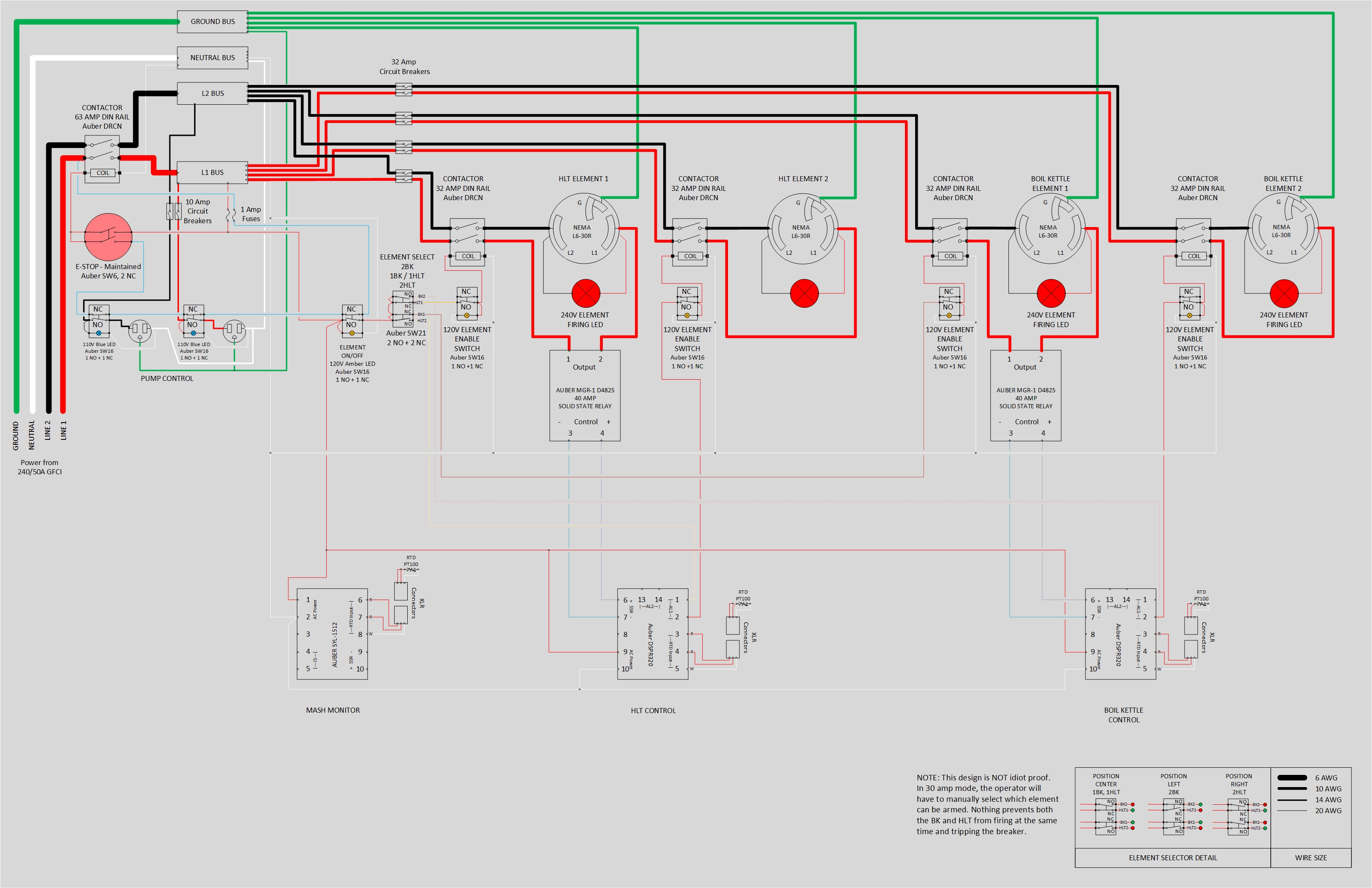





















![Craft A Brew - Safale S-04 Dry Yeast - Fermentis - English Ale Dry Yeast - For English and American Ales and Hard Apple Ciders - Ingredients for Home Brewing - Beer Making Supplies - [1 Pack]](https://m.media-amazon.com/images/I/41fVGNh6JfL._SL500_.jpg)


































